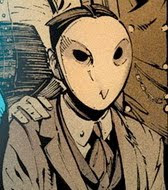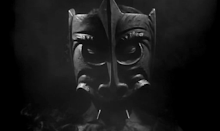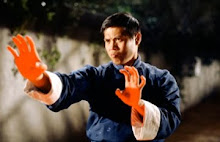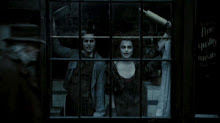On paper it’s tempting to look kindly at Door Into Silence.
After all it’s the last film of a genuine horror master. One that turns away
from his trademark baroque Grand Guignol
in favor of a hushed, death haunted film. One that eschews the lurid
gore effects that made his name and whose later films were dominated by their
attempts to top (needless to say those who come to Door Into Silence looking
for a New York Ripper level of sleaze will be sorely disappointed) in favor of
a film filled with tense existential dread and the presence of the director’s
own oncoming mortality.
That’s how it looks on paper anyway.
In practice Door Into Silence is repetitive, clumsy and
predictable. Any interest that the film has is supplied by the audience through
comparison to Fulci’s other films and its place in his career. Taken on its own
the text itself provides nothing of interest. Just the umpteenth retread of
Carnival Of Souls.
Door Into Silence opens with a car wreck and then cuts
directly to a man (John Savage) standing alone in a cemetery, before we the
wily viewer can wonder “Hmm… what’s this all about?” The man is accosted by a
strange woman who claims to know him, and then has his commute home interrupted
by a funeral procession. A little further on the trip he’s menaced by a strange
hearse that keeps appearing in odd places and driving aggressively. You can
probably guess where this is all going.
Door Into Silence does have a few things going for it, for
one thing it returns Fulci to the American South, and for novelty’s sake
actually looks as though it was shot there, rather than the “A week of
exteriors than back to Europe!” look that haunts most of Fulci’s features, but
then maybe I’m just being naïve. Regardless Fulci knew how to shoot the area,
making the persistent greenery and waterways look down right oppressive.
Which is a good thing as the film often feels as though its
shooting the main character’s road trip in real time. At 87 minutes the movie
is overlong. Door Into Silence is a punishing repetitive movie, every ten
minutes or so the protagonist is either menaced by the hearse, engages in an
elliptical conversation with the mysterious woman, or meets some unfriendly
locals. There’s no way around it, the film is sloppy, in a way that even the
meanest of Fulci’s work usually wasn’t, at the very least it’s the only film of
his that I know of that employs the constant use of overcranking, and editing
so choppy that its downright amateurish. The post production on the film is so
bad I assumed that Fulci had died some time during the making of the film, and
was unable to supervise as they tried to get a coherent whole out of a
truncated production. But nope, he expired five years after the completion of
the film. Which was a depressing thing to find out, let me tell you.
The film looks
shoddy too, supposedly shot for TV (I couldn’t confirm this, but it would
explain the film’s aspect ratio and absence of trademark gore among other
things) the film looks flat and drab a far cry from Fulci’s usual lurid Paperback
Novel cover compositions.
In short Door Into Silence is just about as disappointing as
a film can be. Not so much a final bow as it is an awkward cough and an
embarrassed shuffle off stage, Fulci deserved better.















































































































